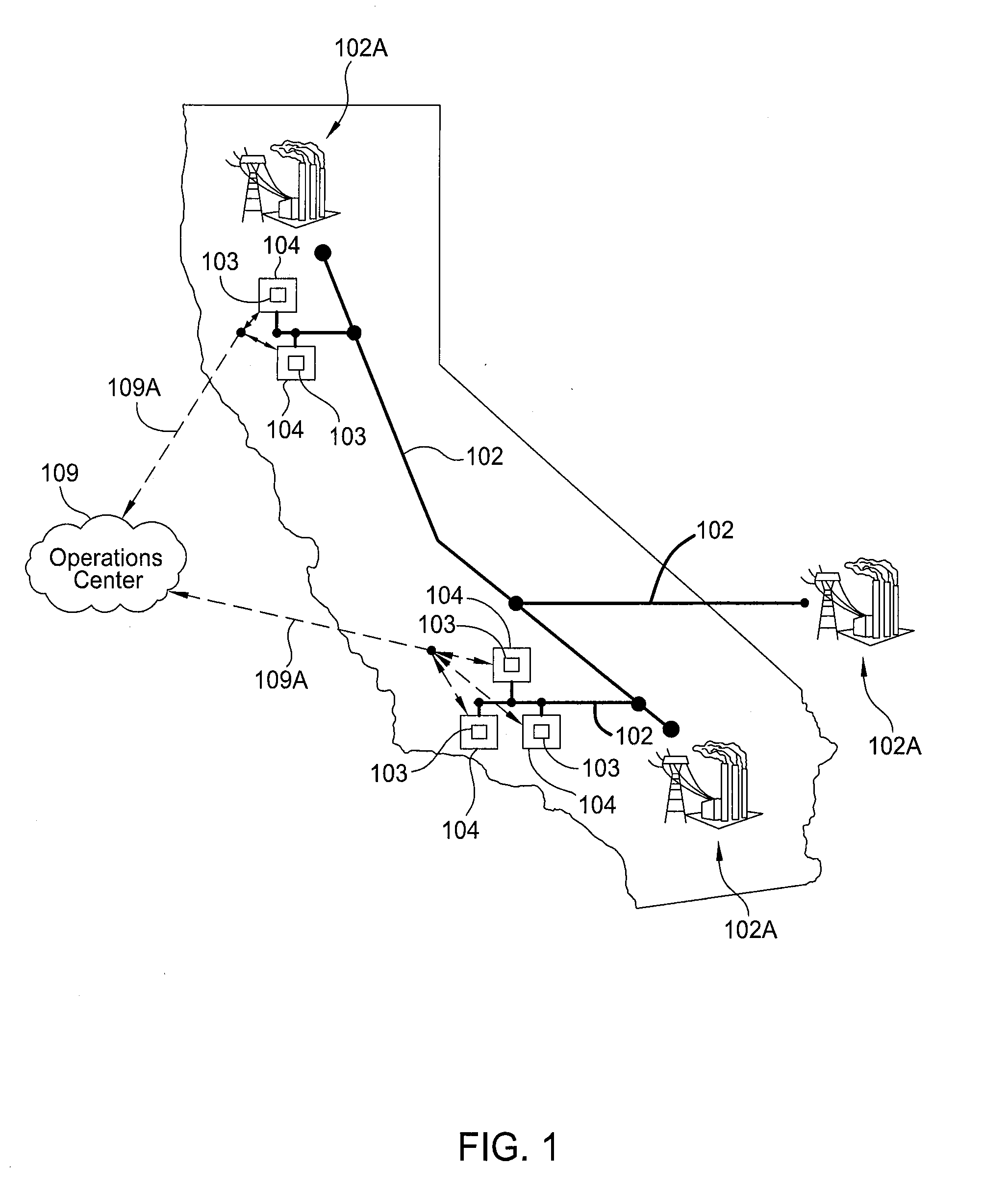The cost to a utility for generating or
purchasing electrical energy increases dramatically during periods of peak use versus periods of off-peak usage.
The higher rates charged during peak usage periods can lead to significantly higher energy costs for the user, especially when the user's period(s) of high demand coincides with or falls within the interval set by the utility as peak hours.
Energy storage mediums, especially
battery energy storage, are expensive and, while various techniques are known by which an energy storage
system can be used to optimize energy use at a business or home, such techniques are generally inefficient in applying
stored energy to effectively control the energy use at an electric load location.
Consequently, an impractical quantity of energy storage mediums are required at an electric load location to realize useful energy arbitrage.
Each of these approaches generally requires an uneconomical amount of energy storage capacity in order to offset demand peaks at the electric load location.
Furthermore, use of a single demand set-point typically results in an energy storage
system running out of energy storage availability due to over-reaction of the controlling components to the demand
set point set by the controlling
system.
Not only is wind and solar generation unpredictable, but these generators also have no
automatic control schemes to help maintain system synchronous speed and no event response capability during their process of delivering power to the grid.
During grid events, such as when there is
electricity supply disruption, due to transmission or generation failure or
renewable energy source(s) variability,
electricity generation from the power generators can become out of step, or
sync.
The lack of synchronization can both be due to the time it takes for power to travel over long distances and the different speeds at which generators respond to meet these demand and supply changes.
The power oscillations create swings in the amount of
power cycling back and forth on the transmission and distribution lines that can both damage transmission and distribution equipment and create additional energy losses in the power lines, thereby de-rating the grid's transmission capacity.
While oscillation in the
power flow in the grid does occur after the first grid event, the amount of
power fluctuation is not significant enough to cause large fluctuations in the power flowing in the electric grid.
However, one will note that the second grid event (e.g., Event 2) causes a much larger drop in power flowing through the electric grid which causes larger undamped oscillations to occur in the electric grid, as the power generator attached to the electric grid try to correct for the drop in
power transmission through the grid.
Typically, these power oscillations cannot be measured at a
single node on the grid, and thus require multiple measurement nodes to determine the oscillation.
It is believed that the undesirable effect of having the
relative power angles from two or more power generators being out of
sync becomes a larger issue when moderate to large power fluctuations occur within the grid (e.g., oversupply or undersupply situations caused by a grid event).
California's transmission grid has several transmission lines with
constant power oscillations, some of which cause the transmission operator to place significant restrictions on
transmission line capacity (e.g., restrictions on the power delivery).
This, in turn, restricts the import of clean and inexpensive
hydropower from the Pacific Northwest, for example.
As an example, if Los Angeles experiences a large load in the late afternoon of a hot day and a nearby power
plant or
transmission line fails, then there is a sudden undersupply
scenario in the power distribution and transmission grid in Southern California.
Then both the local and Northwest power generators respond to meet the increased
power demand created by the power
plant failure, but the generators in the Northwest are generally relatively slower to respond, due to electrical transmission delays and the nature of the power generating devices used to supply power to the grid.
The difference in the timing of the delivery of power from the local and Northwest power generators then creates an oversupply situation in Southern California, as both power generators try to compensate for the variation in the
power demand.
Therefore, again, an undersupply situation occurs as both generators try to compensate for the over-supply situation.
Greater occurrences of these power swings and
instability in the delivery of power through the various grid distribution and transmission lines have been happening more frequently across the US.
There is a belief that the addition of
renewable energy source will cause the electric grid to become more unstable as more conventional synchronous generation are displaced by the variable power generation created by most
renewable energy sources.
Moreover, today's
electric power grid is also increasingly threatened by variable
electricity demand and the addition of intermittent supply from many different types of power generators, such as renewable energy power generators, fast acting
natural gas power generators and
fossil fuel power generators.
The fluctuating supply of power in the electric grid creates issues for the electric grid equipment originally designed to balance slower-changing load / demand and supply.
Mechanically actuated equipment like load tap changing transformers (LTCs),
voltage regulators, and switched capacitors are unable to switch fast enough or often enough in order to support or compensate for this variability.
Their mechanical nature results in equipment that is not able to meet the needs of today's changing electric
grid design.
The increased variability will result in utility equipment having shorter lifespan and utility customer's equipment being damaged more frequently as
voltage, current and / or power fluctuations become uncontrollable and exceed acceptable tolerances.
 Login to View More
Login to View More  Login to View More
Login to View More 


